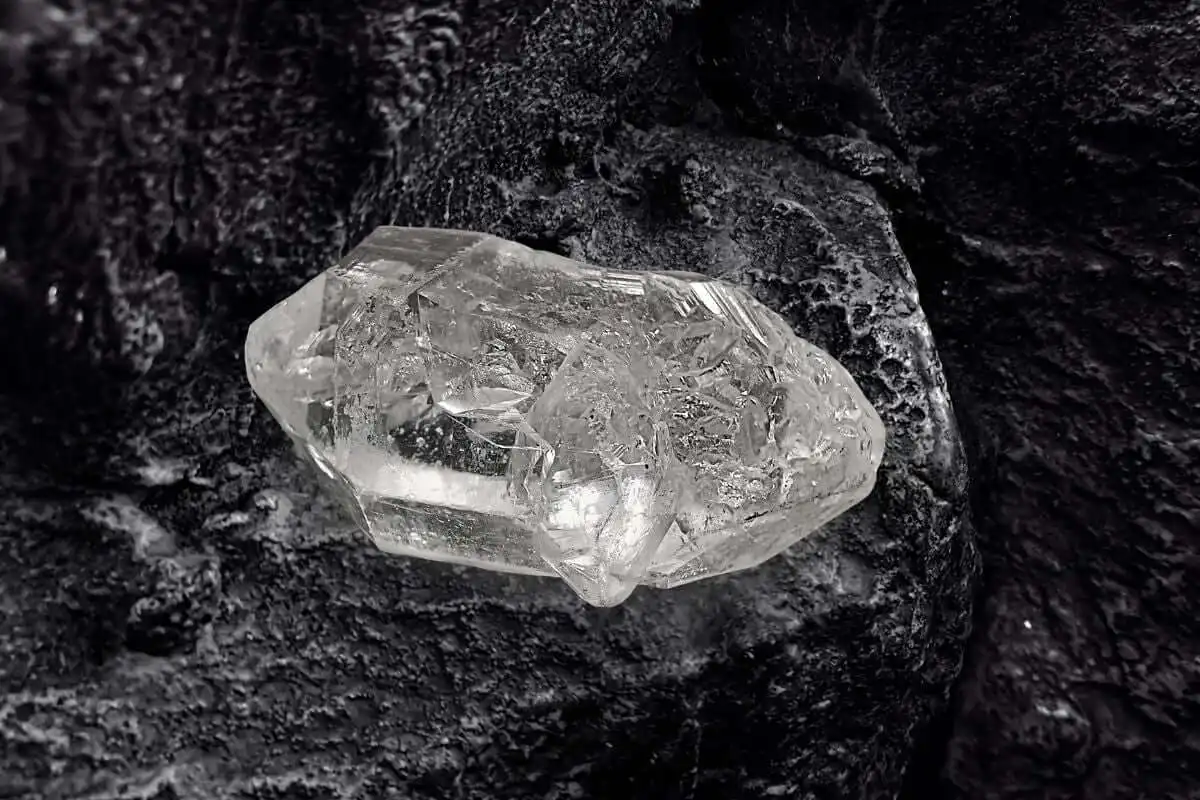The Earth’s mantle, a vast and mysterious region beneath the crust, plays a crucial role in shaping the planet’s geology and sustaining life. But how do we unlock the secrets of this deep, inaccessible part of our planet? The answer lies, in part, within one of the most coveted substances on Earth: diamonds.
While diamonds are renowned for their beauty, they also provide critical insights into the deep processes occurring in the Earth’s interior, particularly regarding the carbon cycle in the mantle. Let’s explore how diamonds help us understand the movement of carbon deep within the Earth and why this is important for both geologists and environmental scientists alike.
Diamonds: Nature’s Window to the Deep Earth
Diamonds form under extreme conditions of pressure and temperature, deep within the Earth’s mantle, typically at depths between 140 to 190 kilometers (87 to 118 miles). These conditions are far beyond the reach of direct human exploration, so understanding the mantle has traditionally been a challenge. However, diamonds that form under these high-pressure conditions often contain trace elements and inclusions, including carbon, that provide valuable clues about the environment in which they formed.
Diamonds, therefore, act as natural time capsules. When they are brought to the Earth’s surface via volcanic eruptions, they carry with them information about the conditions in the mantle at the time of their formation. This allows scientists to study the processes taking place deep below the Earth’s surface without having to directly access it.
The Role of Carbon in the Mantle
Carbon is an essential element in Earth’s composition, and it plays a critical role in the mantle’s geodynamics. The mantle contains a significant amount of carbon, stored in a variety of forms, including carbonates and organic molecules. But how does carbon move through the mantle? And how does it impact geological processes?
The mantle’s carbon cycle is largely driven by tectonic activity. As tectonic plates shift and interact, carbon stored in the Earth’s crust is transported into the mantle, where it can undergo transformations. In some cases, carbon is released back to the surface during volcanic eruptions. In others, carbon can be sequestered in the mantle, where it may remain for millions of years.
Diamonds provide key evidence of the processes that govern carbon in the mantle. Researchers have discovered that diamonds often contain inclusions of carbon-bearing minerals, such as graphite, which help to reveal how carbon is stored, transported, and even transformed in the mantle. By studying these inclusions, scientists can gain a better understanding of the pathways that carbon follows deep within the Earth.
How Diamonds Help Reveal the Carbon Cycle
While diamonds are predominantly composed of pure carbon, the study of their inclusions reveals much more about the Earth’s carbon cycle. These inclusions often contain tiny minerals, such as silicates or carbonates, that were trapped in the diamond as it formed. These trapped minerals serve as a snapshot of the conditions in the mantle at the time of the diamond’s creation.
For instance, scientists have found that certain diamonds contain inclusions of carbonate minerals, which suggests that the mantle holds carbon in a stable form for long periods of time. This is crucial for understanding the long-term carbon cycle of the Earth, which plays a significant role in regulating the planet’s climate.
Additionally, the study of diamond formation processes helps scientists understand the temperature and pressure conditions under which carbon behaves in different ways. Some diamonds form under conditions of relatively low pressure, while others form under extreme conditions deep within the mantle. These variations provide insights into how the mantle’s carbon cycle changes at different depths.
The Significance of Diamonds in Understanding Earth’s Climate
The carbon stored in the mantle is an integral part of the Earth’s overall carbon cycle, which is closely linked to the planet’s climate system. Carbon dioxide (CO2) from the mantle can be released into the atmosphere during volcanic eruptions, where it can contribute to the greenhouse effect and influence global temperatures. Conversely, carbon can also be sequestered in the mantle over geological time scales, helping to regulate atmospheric CO2 levels.
Understanding how carbon moves through the mantle is crucial for scientists who are studying climate change. By examining diamonds, researchers can gain valuable insights into the long-term processes that regulate carbon storage and release in the Earth’s interior, which ultimately affects the atmosphere and climate.
The Future of Diamond and Mantle Research
As technology advances, scientists are developing increasingly sophisticated methods for studying diamonds and their inclusions. Techniques such as high-resolution imaging, laser spectroscopy, and chemical analysis are allowing researchers to delve even deeper into the properties of diamonds and their role in the Earth’s carbon cycle.
Future research will continue to explore how diamonds can provide a more detailed picture of the mantle’s carbon dynamics, as well as the broader geodynamic processes that shape our planet. By further understanding the movement of carbon in the Earth’s mantle, scientists will be better equipped to predict climate changes and mitigate their impacts on the planet.
Conclusion
Diamonds are more than just beautiful gemstones; they are valuable scientific tools that offer unique insights into the deep Earth, particularly the complex carbon cycle that drives mantle geodynamics. By studying the carbon inclusions in diamonds, scientists are unlocking the mysteries of the Earth’s interior and gaining a better understanding of the processes that shape our planet’s climate and geology.
As research on diamonds and the mantle progresses, we continue to learn more about the Earth’s deep carbon cycle, providing crucial information for everything from climate science to geodynamics. So, next time you admire the sparkle of a diamond, remember that it may just be a glimpse into the deep, carbon-driven forces shaping our world.



